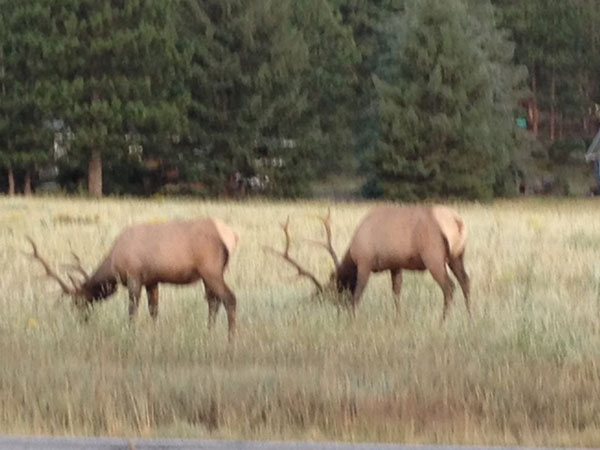I bet these aren’t the usual pictures you see coming from a dressage show grounds.

One thing I notice as I travel around the country is that what might seem like similar conditions for a show can be very different in various locations.

I was judging last week at Estes Park, Colorado, at 8,000 feet above sea level. (Maybe someone out there can tell me if this could be the highest elevation for a dressage show in the U.S.?) I judged several years ago at Ridgeway, Colorado, which seemed really up there at the time, but it turns out that it was only 7,000 feet, although it was harder to get to.
I was curious about whether the elevation would make things somehow different for the horses and riders than the more usual sea level that I’m used to in New Jersey and Florida. I know I had trouble for a day or two adjusting to the altitude — let’s just say that I did not take much advantage of the local breweries that are the pride of Colorado. I live in the Blue Ridge Mountains in North Carolina, but the Colorado definition of mountains is very different.
What cracked me up was when jackets were excused in the morning. I checked the weather app on my cell phone and it was all of 65 degrees! Huh?? “It’s the humidity,” I was told. Right, the humidity was 49 percent and the “feels like” was still 65 degrees. However, it did really feel warm, with a cloudless sky and no wind, and I suspect the sun simply must be closer when you’re at 8,000 feet. I also was wondering if the horses and riders who traveled to the show might not be used to the elevation there and would have some trouble with breathing or with their heart rates.
I will say that folks who show in Colorado are tough. We had a variety of challenging weather conditions, and the two-lane snake that took us to this beautiful site must have been a real challenge for a long goose-neck trailer. I suspect the ability to swing with a variety of conditions makes these folks easy to be around — it was a wonderful atmosphere of friendly riders and show organizers/volunteers.
I also wonder if anyone who graduates from high school in Colorado automatically minors in meteorology. People there were great at gauging when rain (wind, lightning!) would hit and looked prepared for just about any weather conditions.
As I write this, I am back at sea level in Oregon (after a round trip to North Carolina). It is 70 degrees today and I am downright cold. So, yes, the sun must be closer when you are at 8,000 feet!











